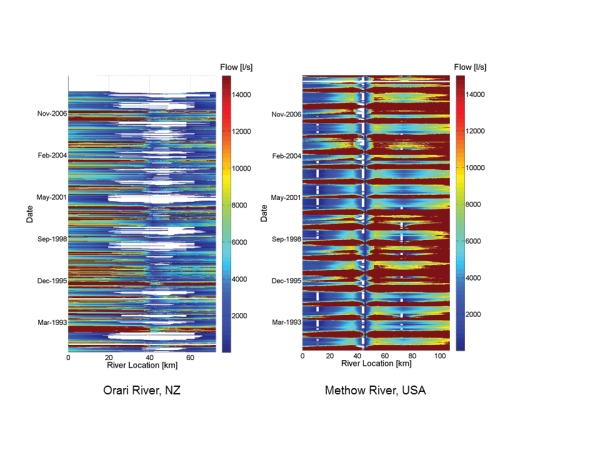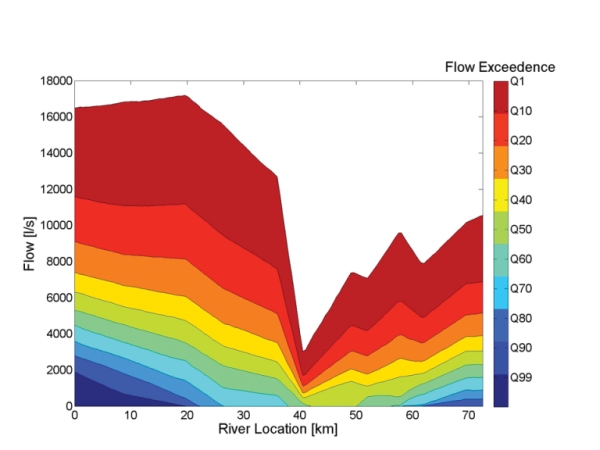ELFMOD is a statistical tool for estimating flows at multiple points along rivers subject to surface/ground-water exchanges, using both measured flow at selected sites and other predictor variables such as rainfall and groundwater levels.
ELFMOD can visually represent how river flow changes with time and distance. This is helpful because multiple flow recorders along a river’s course are impractical and river flows upstream and downstream of a recording site are commonly quite different from those measured at the site, due to gains from tributary streams and groundwater, and losses to groundwater.
ELFMOD generates time-series of flows at user-defined points and provides flow estimates (with confidence level) from statistical relationships between flow-gauging sites. It presents the data in an informative and visually-enlightening way, and provides important information for specific locations, including:
- long-term averages
- event frequencies
- event durations
- substrate-mobilising flow rates.
ELFMOD needs:
- spot-gauging measurements at multiple locations (data may already be available), and
- continuous (time-series) river flow measurements from a recording station.
Permanent, flow-rated water level recorders are the most common sources of flow time-series data. In some cases, time-series of rainfall and water table levels can be substituted for flow time-series.
Applications
As well as predicting river flows and other hydrological metrics at specific locations, ELFMOD can be used to:
- summarise river flow regimes
- set water abstraction limits
- determine environmentally-protective minimum flows
- prescribe flushing flows
- prescribe channel-maintenance flows
- predict future flows if a predicted flow time-series is used as an input
- provide useful information relating to a river drying up, including the average number of dry days per location, dates dry days occur and the location along the river
- identify trends in river flow behaviour by plotting flow against time
- make use of time-series data from multiple locations to calculate a suite of whole-river metrics, such as using flow loss rate, flow gain rate, flood attenuation patterns and continuous estimates of flow states.
Reliable river flow data are essential for establishing abstraction limits and minimum flushing- and channel maintenance-flow levels that will protect river ecosystems.
NIWA has used ELFMOD to explore longitudinal and temporal flow variation in various alluvial rivers, including the Selwyn and Orari rivers in Canterbury.
Read the paper: Longitudinal river ecohydrology: flow variation down the lengths of alluvial rivers
Find out more
ELFMOD was developed as part of NIWA’s Sustainable Water Allocation Programme.
The models that underpin EFLMOD are fully described in international peer-reviewed scientific literature.


